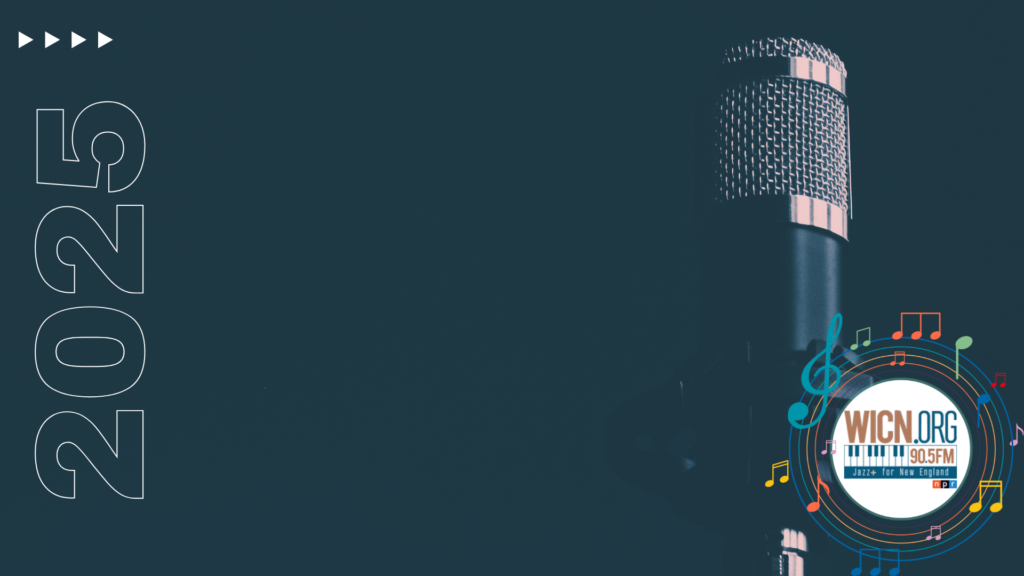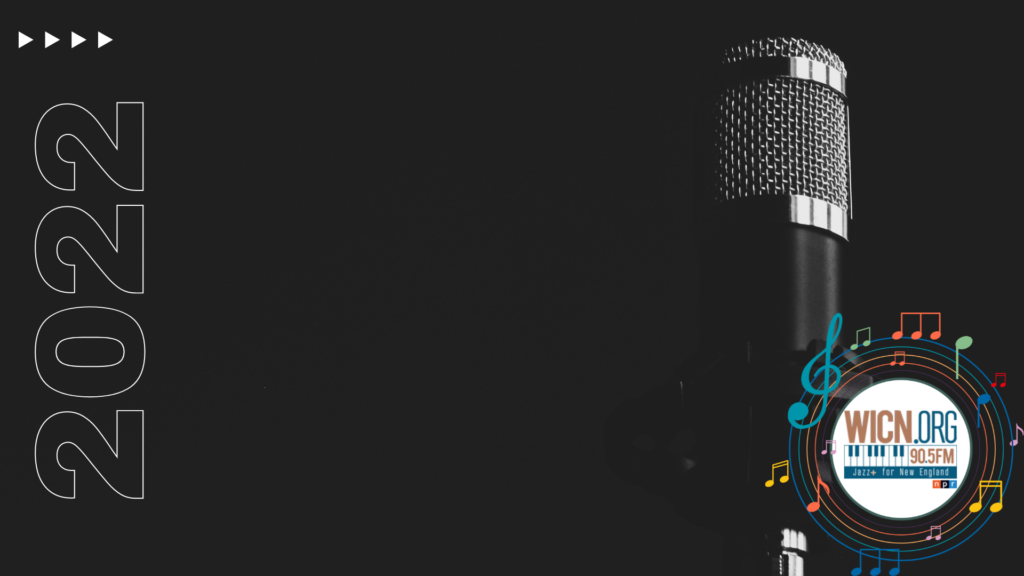WICN Artist of the Month, January ’22: Antônio Carlos Jobim
Written by Doug Hall on January 3, 2022
Often when a selection of bossa nova jazz is played by Stan Getz, Donald Byrd, or Dizzy Gillespie, it is attributed to them from an American perspective. The 1964 groundbreaking release in the US by Verve Records, Getz/Gilberto, sold over 2 million albums the first year and made Getz an international star. This overwhelming success, and the subsequent bossa nova-style releases by Getz and other American jazz musicians overshadows the truer origins of this Brazilian samba-based, highly syncopated rhythmic music. Legitimately, Getz and other US musicians’ main contribution was to add an Americanized, sexy and seductive groove.
The direct Brazilian pioneers of this genre were guitarist and singer João Gilberto, and Antônio Carlos Jobim, Brazilian composer, pianist, guitarist, songwriter, arranger, and singer, who wrote the majority of the songs on Getz/Gilberto (with lyricist and fellow Brazilian Vinicius de Moraes). Jobim also composed the now-iconic signature bossa nova piece, The Girl from Ipanema, which has since been rerecorded by hundreds of musicians internationally, both in jazz and popular music.
Mr. Jobim was born in Rio de Janeiro, and in keeping with his most famous composition, grew up in nearby Ipanema. As music is historically very much a part of Brazilian culture, and almost every family has someone who plays an instrument or sings, the samba sound is found at a local level, intrinsic to the community one lives in. Jobim would learn both piano and guitar as a child and begin lessons and instruction at 14 years old. His roots and passion for his indigenous Brazilian music, plus influences of American big band orchestras, would take him away from any consideration of a business career. “He worked briefly as an architect in the 1940s, but after hearing Duke Ellington and other American bandleaders perform in Rio, he decided to become a musician, performing in the small, crowded Rio clubs known as ‘inferninhos,’ or ‘little infernos.’ ” (New York Times, Dec. 9, 1994, pg.20)
During a 1962 interview with Gene Lees at the songwriter’s home, published in JazzProfiles (Oct. 30, 2011), the artist spoke about the difference between samba music and bossa nova thusly:
The authentic Negro samba in Brazil is very primitive. They use maybe ten percussion instruments and four or five singers. They shout and the music is very hot and wonderful.
But bossa nova is cool and contained. It tells a story, trying to be simple and serious and lyrical. You could call bossa nova a clean, washed samba, without loss of momentum. We don’t want to lose important things. We have the problem of how to write and not lose the swing.
Early in his direction as a musician, he would already begin to establish a samba-influenced style that was quite distinctive, as observed by trumpeter Bill Horne, “soft and sophisticated, in much the same way an American pop tune sounds with a subdued modern jazz treatment.” The next and most pivotal step for Jobim’s professional career would occur in the late 1950s when he established a musical collaboration with fellow Brazilian João Gilberto – singer, songwriter, guitarist, and pioneer of this evolving music, who was mixing samba and jazz in what became known as bossa nova.
Their recording of Chega de Saudade (1958), composed by Jobim, is now widely regarded as a jazz standard and introduction of this musical genre. The song also became the musical theme for a Brazilian production of Black Orpheus in ‘59, scored by lyricist Vinicius de Moraes, which won an Academy Award for best foreign film. “By 1959 Chega de Saudade and Desafinado took Brazil by storm and after the Academy Award, by the early 1960s, Jobim’s music was playing around the world.” (www.britannica.com/biography/Antonio-Carlos-Jobim)
Following this success, a now historical performance at New York City’s Carnegie Hall in November 1962, sponsored by the Brazilian Cultural Foundation, would release floodgates of enthusiasm and exposure in its popularized American version to the US listening audience and charting record sales. Brazilians Jobim, Castro-Neves, Sergio Mendes and João Gilberto, among others, were joined by jazz artists Stan Getz, Charlie Byrd, and Gary McFarland “in the first large-scale presentation of bossa nova to an American audience.” Castro-Neves, a Brazilian guitarist considered one of the founders, remembered the concert vividly, as a 22-year-old leading a quartet: “It launched the movement, creating a stir that was felt immediately.” (www.latimes.com/archives/la-xpm-1987-11-25-ca-1611-story.html)
Antônio Carlos Jobim, João Gilberto, and all of Brazil’s samba-based music suddenly received further significant exposure by a famous collaborative effort between jazz guitarist Charlie Byrd and jazz saxophonist Stan Getz in 1961. Byrd had just returned from a US government-sponsored diplomatic trip to South America and brought back bossa nova recordings by both Jobim and Gilberto. Sharing with Getz, and convincing Verve Record’s Creed Taylor, they made some recordings that have not been released. But, the breakthrough occurred later in a 1962 gathering of jazz musicians, including his brother Gene Byrd on bass, drummer Buddy Deppenschmidt and Bill Reinchenbach on percussion, and the extraordinary talent of Stan Getz’s melodically smooth and sexy tone on tenor sax. The tracks recorded were released as Jazz Samba (1962) and record sales soared. “In the middle of September, it entered Billboard’s pop album chart and on March 9, 1963, it made No. 1; and spent a total of 70 weeks on the bestseller list, and truly was a groundbreaking record. It made bossa nova the coolest music on earth.” (www.udiscovermusic.com/stories/jazz-samba)
Many other jazz artists were influenced by this unique Brazilian style, including legendary jazz vocalist Ella Fitzgerald, who recorded “Stardust Bossa Nova” and bandleader, bebop pioneer and champion of Latin jazz, Dizzy Gillespie, who started including Jobim’s and Gilberto’s compositions in his live performances, including the Newport Jazz Festival of 1961.
The recording of Getz/Gilberto would follow in 1963, and release in 1964 with Getz and Gilberto playing compositions primarily written by Jobim (who also played piano on the recording) with some collaborative efforts, which also included the defining standard of this musical category, The Girl from Ipanema, as sung by Astrud Gilberto. The album, one of the largest selling jazz recordings of all time with sales of over 2 million by 1968, “was bossa nova’s finest moment,” as reviewed by AllMusic.com critic Steve Huey, “Getz/Gilberto trumped Jazz Samba by bringing two of bossa nova’s greatest innovators – guitarist/singer João Gilberto and composer/pianist Antônio Carlos Jobim – to New York to record with Stan Getz. The results were magic, making this musical entry a part of the jazz landscape. Most of the Jobim songs recorded here also became standards of the genre.” The album, with worldwide listeners’ and critics’ attention, received the top Grammy awards in ‘65 including Album of the Year, Best Jazz Instrumental Album, Individual or Group and Best Engineered album, non-Classical. Additionally, Jobim’s now signature composition The Girl from Ipanema, won the Grammy for Best Record of the Year.
By the mid-to-late 60s, the opportunities for jazz albums in the US were impacted for all recording artists and performers, with the British Invasion of the Beatles and other UK rock bands, drawing young listeners to American rock ‘n’ roll, which owned the radio waves and fed larger concert venues. Jobim also experienced pushback in Brazil against a perceived more Americanized version of this native-born music. “While Jobim enjoyed wide success in the US, bossa nova was met with resistance back home. Popularity had generated a backlash, especially by purists who thought the music too American.” (encyclopedia.com/people/literature-and-arts/music-popular-and-jazz-biographies/Antonio-Jobim)
Jobim’s recording career would return to popular critic’s praise with the 1967 release Wave.
Seen as a continuation of his unique understated tone and instrumental sound, Jobim had returned to his Verve producer Creed Taylor (now with A&M), proving again a successful team. “Picking up right where they left off with this stunningly seductive record,” Richard Ginell of AllMusic reviewed, “possibly Jobim’s best.”
Jobim would take an orchestral direction with several later releases including Jobim (1972) and Urubu (1975) that mixed both Brazilian music and jazz but also showed an influence in modern classical composers such as Debussy. At this same time, the military coup that took power in Brazil in the late 60s, enforcing martial law and imprisoning, torturing and executing all resistance fighters, impacted Jobim and other musicians directly. “…encountering difficulties with the military regime, Jobim along with Caetano Veloso, Giberto Gil, Vincius de Moraes, and Carlos Lyra were detained by authorities in 1970 and Jobim’s songs were scrutinized for subversive lyrics.” (encyclopedia.com)
In 1980, reconnecting with another record producer and personal friend, Claus Ogerman, Jobim would release a more commercially song-based album, Terra Brasilis, that was a “summing up of the composer’s more popular work” (encyclopedia.com).
A final return to Carnegie Hall in 1985 culminated the recognition of his contribution to this mix of Brazilian samba and American jazz, as reviewed by John Rockwell of the New York Times: “No such culture has made a bigger impact in recent years in New York than that of Brazil. For that reason alone, the first American concerts in nearly 20 years of Antônio Carlos Jobim, over the weekend at Carnegie Hall, took on a special significance.”
The 1990s saw a rebirth of interest in the bossa nova sound and the pioneers including Jobim, Gilberto, and Getz. Concert performances in Europe and the US found a new audience and resurgence of popularity thirty years after the release of the standard-bearer recording Getz/Gilberto. “Now, after The Girl from Ipanema charmed the world in the mid-60s, Brazil’s most popular composer, Antônio Carlos Jobim, is once again playing to packed audiences.” (New York Times, Sept. 2, 1991). That same year, Jobim would be entered into the Songwriter’s Hall of Fame in New York City.
Adding interpretations and a contemporary treatment to his compositions, Jobim’s songbook would be covered by many artists, but most popularly by American jazz singers Ella Fitzgerald on Ella Abraca Jobmin (1981) and Frank Sinatra on Francis Albert Sinatra & Antônio Carlos Jobim (1967). The flavor of this special style of Brazilian samba had merged with American jazz. In Jobim’s own words, “trying to be simple, serious and lyrical,” his musical influence had already evolved, in his lifetime, a Brazilian sound that became a chapter in the standards of jazz. This is an exceptional accomplishment by any musician, which is certainly to be shared with his fellow countrymen, João Gilberto.
Recognized by both Brazil and an American jazz audience and music critics internationally, Jobim, who died in 1994, has been honored by many cultural organizations around the world. Posthumously, he received a Lifetime Achievement Award at the 54th Grammy Awards in 2012 and in 2014 was inducted into the Latin Songwriter’s Hall of Fame. In 2015, Billboard named him as one of The Most Influential Latin Artists of All Time.
In an interview late in his life, Jobim said “Bossa Nova is ecological, is always evolving.” Clearly, Jobim has added a genre to, and enriched the vocabulary of jazz and will continue to influence musical styles and artists who interpret his compositional legacy.

